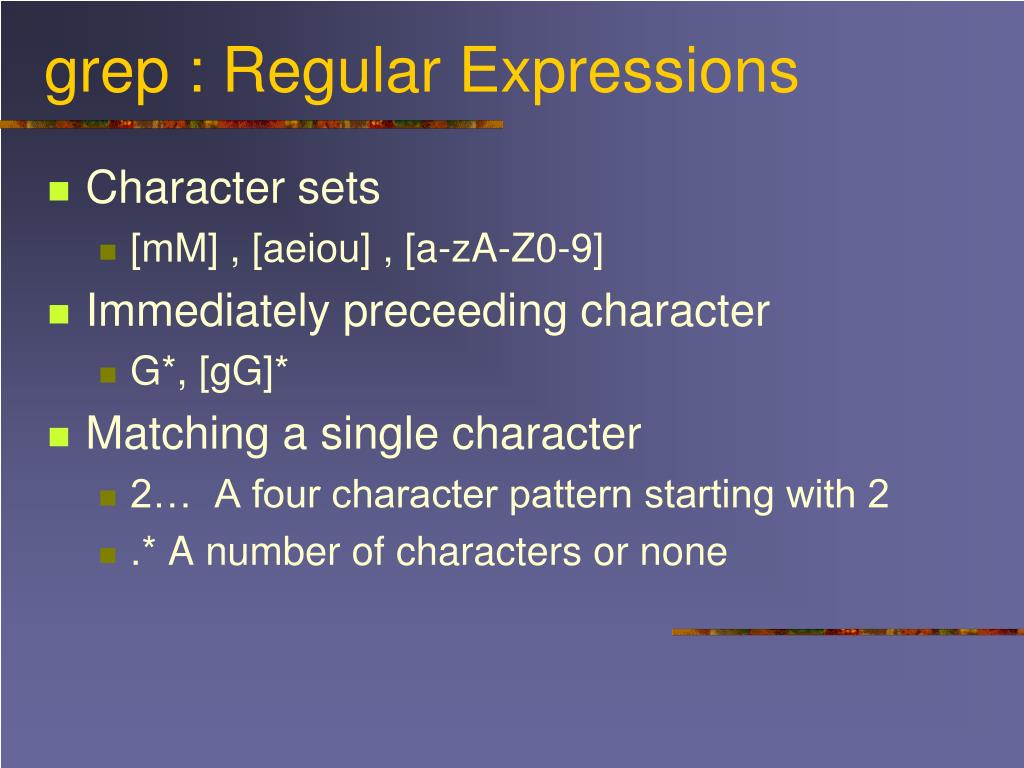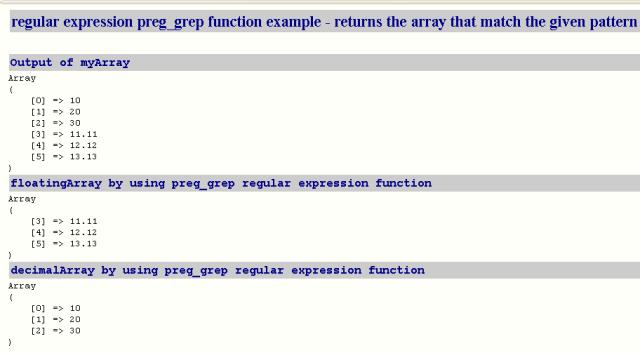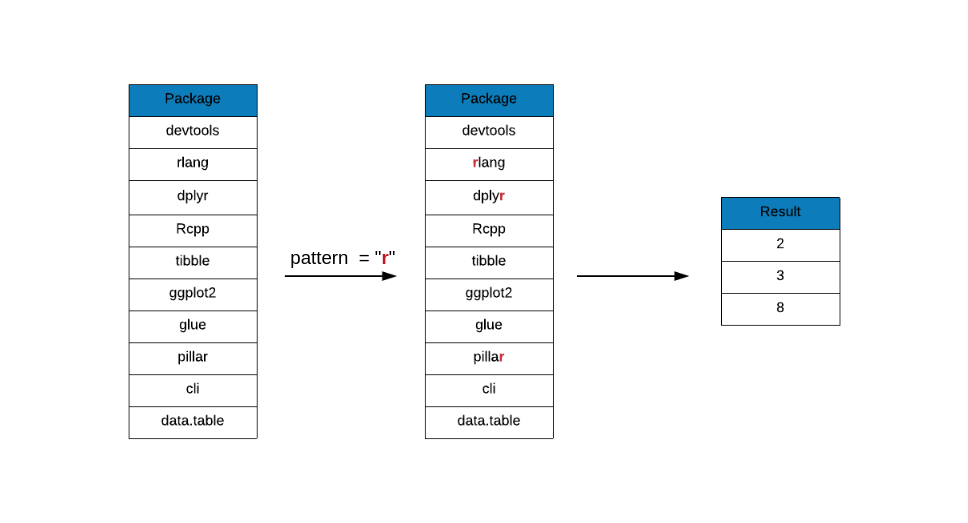
- Grep with regular expression software#
- Grep with regular expression license#
- Grep with regular expression mac#
Use -B to see lines before the match and use -C to see lines before and after the match: $ grep -r -C 2 "handler". Use the -A option to see lines after the match. Grep can also show context around the match. Grep doesn’t have to show the output, it can also report on which file contains a match with the -l option: $ grep -rl "handler". templates/cloudwatch.yaml: def handler(event, ctx) -> None: templates/cloudwatch.yaml: def handler(event, ctx): templates/cloudwatch.yaml: Handler: index.handler lambdas/cloudwatch_subscription_lambda.py:def handler(event, ctx) -> None:

lambdas/log_lambda.py:def handler(event, ctx): To search through all files in all folders we need to use the recursive -r option: $ grep -r "handler". Grep can only operate on files, that is why we see the message ‘Is a directory’. Grep can also be used to search through multiple files by typing: grep -n "boto3". The option -n shows the line number of the match: $ grep -n "boto3" Pipfile
Grep with regular expression license#
For example, to search for the text ‘Dennis’ in the file LICENSE type: grep "boto3" Pipfile Grep can be used to search through files for content. I have prepared an example project that you can use to learn grep. We can combine options so -iw searches for an exact word, case insensitive: history | grep -iw "TEST_1" | head -3ĥ45 history | grep -iw "TEST_1" | head -3 We can also match on exact words with the -w option: $ history | grep -w "git status" | head -3 That way, grep acts as a filter eg: # take the first 3 lines from the history, filtered by grepīy default grep matches are case sentitive: $ history | grep "TEST" | head -3īy adding the -i option, searches become case insensitive: $ history | grep -i "TEST" | head -3 Most often we use grep to pipe output to. For an overview of the differences see this cheat sheet. The short explanation of the difference is that the GNU version of grep is much easier to use. The BSD version uses the POSIX Compatible Regular Expressions and the GNU version uses the Perl Compatible Regular Expressions (PCRE). The difference between the BSD and GNU version of Grep is the Regex engine that it uses.


Grep with regular expression mac#
The examples that follow use the GNU version of grep, so Mac users should use the ggrep command. The BSD version is called grep and the GNU version is called ggrep. After brew has installed grep, you have two versions of the command. GNU grep can be installed on the Mac by means of homebrew.
Grep with regular expression software#
Linux uses the GNU version of Grep that can be checked by typing: $ docker run -it grep -VĬopyright (C) 2017 Free Software Foundation, Inc. The Mac comes with the BSD version of Grep that can be checked by typing: $ grep -V

Lets start by explaining that the Grep command is different on Linux than on the Mac. When you use the terminal, changes are that you use Linux and Mac and switch back and forth between them. Its time to learn some ‘grep’! Grep on Linux and Mac Regex is a symbolic notations used to identify patterns in text and is widely used to process text. Grep uses regular expressions or Regex for the matching algorithm. The Global Regular Expression Print or Grep is a tool that searches text files for the occurrence of a specified regular expression and outputs any line containing a match to standard output.


 0 kommentar(er)
0 kommentar(er)
